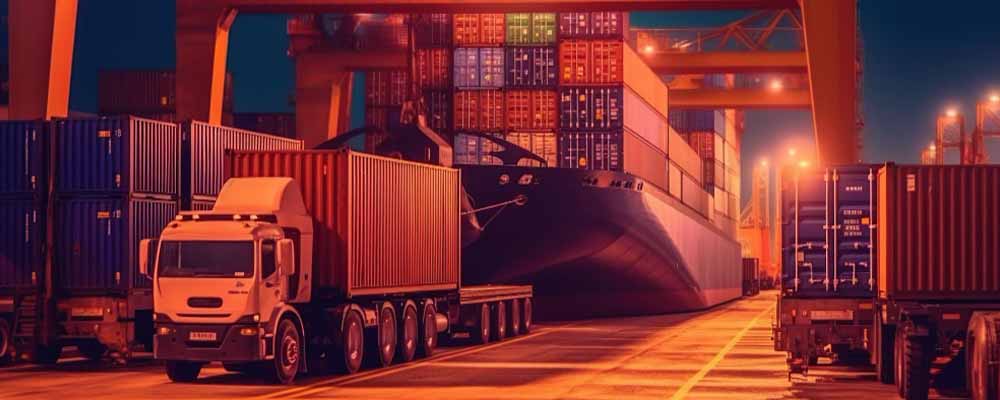 Shipping goods to Thailand is an endeavor filled with possibilities for businesses pursuing expansion of horizons. Thailand, with its rapidly growing markets and developing maritime industry, uncovers many opportunities for trade exploration.
Shipping goods to Thailand is an endeavor filled with possibilities for businesses pursuing expansion of horizons. Thailand, with its rapidly growing markets and developing maritime industry, uncovers many opportunities for trade exploration.
Having one of Southeast Asia’s largest economies, Thailand boasts a thriving economy. It is a gateway of commerce to Asia, making it an attractive site for importation. This blog post discusses the ins and outs of shipping to Thailand- the ways of transport, the major ports to choose from, the transit time considerations, the average shipping expenses, and the requirements to push through with importation.
 What are the Ways to ship to Thailand?
What are the Ways to ship to Thailand?
The methods of shipping to Thailand will differ based on your needs. Factors to gauge when choosing are the nature of items, the kind of container used, the delivery time targets, budget constraints and specifications for handling.
A cost-effective way of shipping to Thailand is ocean freight. Due to the many coastlines found in the country, this is a preferred method of many exporters, especially for bulky items. If shipment is time-sensitive, air freight is usually the way to go. Although costing more than all other modes of transport, air freight is a reliable and the quickest way to ship items.
For neighboring countries such as Malaysia and Laos, rail and road freight may be plausible for bilateral trade connectivity. Conversely, courier services can handle shipping small or medium parcels to Thailand.
What are the Main Ports in Thailand?
The international maritime activities in Thailand are enhanced by the country’s investments in modernizing port infrastructure. Subsequent results are more cargo vessels being handled and increased numbers of importation via sea freight.
The Port of Bangkok, also known as Khlong Toei Port, is Thailand’s largest port and can handle most of the country’s incoming and outgoing containerized cargo. Whereas Laem Chabang Port is the biggest deep-sea port in the country, primarily utilized for container shipping, industrial shipments, and automobile cargo among others.
Situated on the Gulf of Thailand, The Port of Songkhla is a vital harbor for mass shipments of chemicals, petroleum products, agricultural items and many more. The Port of Phuket, located in the famous tourist region, is also an important seaport for maritime transportation.
Below are some of Thailand’s major ports:
| Port | Average Annual TEU’s |
| Port of Bangkok | 120,196 TEUs |
| Laem Chabang Port | 432,184.25 TEUs |
| Port of Songkhla | 140,000 TEUs |
| Port of Phuket | 32,000 TEUs |
| Port of Ranong | 5,000 TEUs |
How much does it cost to ship a container to Thailand?
For accurate pricing, it is recommended to get the opinion of the logistics providers involved. The basis of costing usually depends on multiple factors. The larger the container dimension is, the more expensive it will be. Greater distances between origin and destination ports will result in a higher cost. The shipping company or freight forwarder you partner up with will have different rates compared to others.
Market conditions such as currency exchange rates, fuel values, seasonal demands, and geographical and political situations will inevitably affect shipping costs. Moreover, there may be extra charges for door-to-door delivery, insurance policies, warehousing, and customs clearance.
Here’s a rough estimate of shipping costs to Thailand:
| Country | 20ft | 40ft |
| United States | $2500 | $4550 |
| China | $850 | $1550 |
| Spain | €1150 | €4550 |
| European countries | €1150 | €4550 |
What is the Transit Time when shipping to Thailand?
Estimating the precise transit times to Thailand changes every so often, but generally ranging 15 to 52 days on average. The ports where the shipment came from and is going to are major factors to consider. Similarly, the distance navigated, port delays, weather, and the efficiency of the freight forwarder or shipping carrier can expedite or interrupt the shipping process.
Here’s a list of approximate estimates of delivery when shipping to Thailand:
| Country | Days |
| United States | 15 to 52 days |
| Europe | 32 to 40 days |
| Asia | 15 days |
What paperwork is needed for international shipments to Thailand?
Customs regulations in Thailand are in place to make sure transactions are legal and within safe parameters. Compliance with these rules is important to secure success in importation.
Below is the list of the most common documentation necessary to be cleared by Thailand’s customs:
- Bill of Lading
- Import License
- Packing List
- Certificate of Origin
- Commercial Invoice
- Insurance Certificate
- Customs Declaration Form
- Phytosanitary Certificate for agriculturally related shipments
- Additional Certificates and Documentation as needed
 How do I find a freight forwarder in Thailand?
How do I find a freight forwarder in Thailand?
Forging alliances with reliable carriers, shipping companies and freight forwarders is a significant first step in your importation journey. They can make your overall transportation management simple or more complex.
Pangea stands tall as a leading freight forwarder across the globe, boasting numerous connections in Thailand.
To commence your importation endeavor to Thailand with ease and confidence, tap into Pangea’s extensive network. Make sure to visit Pangea at https://pangea-network.com/ to greatly improve your importation experience.
Frequently Asked Questions
- What is the estimated transit time for shipping a container to Thailand?
Estimating the precise transit times to Thailand changes every so often, but generally ranging 15 to 52 days on average. The ports where the shipment came from and is going to are major factors to consider. Similarly, the distance navigated, port delays, weather, and the efficiency of the freight forwarder or shipping carrier can expedite or interrupt the shipping process. See expected delivery times above.
- How do you figure out the shipping cost to Thailand?
For accurate pricing, it is recommended to get the opinion of the logistics providers involved. The basis of costing usually depends on multiple factors- container dimension, distance covered, shipping company or freight forwarder rates, market and extra charges for added services. See the table above for estimates.
 Conclusion
Conclusion
To wrap things up, Thailand offers vast opportunities for businesses. The country’s growing economy sets up a perfect space for international trade. By leveraging the competency of freight forwarders like Pangea, importers can seamlessly traverse the difficulties of importing goods to Thailand. Pangea specializes in ocean freights and can support your importation while minimizing possible risks.




 What are the Ways to ship to Thailand?
What are the Ways to ship to Thailand? How do I find a freight forwarder in Thailand?
How do I find a freight forwarder in Thailand? Conclusion
Conclusion



